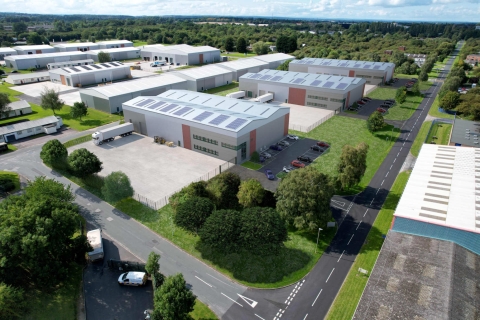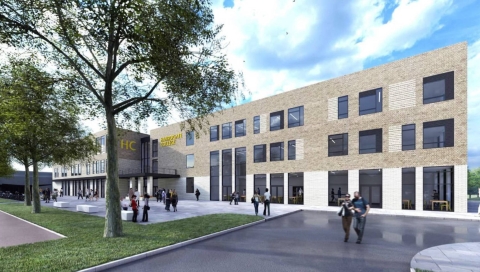
Two North Yorkshire MPs have asked Eric Pickles MP, Secretary of State for Communities and Local Government, to call in the planning application for an incinerator at Allerton Park.
The facility at the current Allerton landfill and quarry site would treat up to 320,000 tonnes of household waste per year and recover recyclable materials and energy from it.
The controversial planning application sparked protests from 45 parish and town councils and over 9,000 people – including local MPs Andrew Jones and Nigel Adams – signed a petition opposing the proposal. ‘Call in’ means that the application would be decided by the Secretary of State rather than North Yorkshire County Council’s Planning Committee.
The petition was against the Council’s decision on awarding the long term waste management contract to AmeyCespa and was not in response to the planning application for the proposal – this application was only validated in October 2011 and is still at the consultation stage. The public can still comment on the proposal.
The application consists of 1000 pages of technical data and more than 200 individual documents. Earlier this year the County Council selected Amey Cespa as its preferred contractor for the project subject to planning approval of the specific proposal.
AmeyCespa have put forward a number of technologies:
- A Mechanical Treatment (MT) plant designed to receive and treat residual municipal waste from York and North Yorkshire. The plant will automatically screen out organic matter and recover metal, paper and plastic for recycling.
- An Anaerobic Digestion (AD) plant to treat the separated organic waste. The plant will produce a biogas which will generate around 1.1 MW of renewable ‘green’ electrical power.
- An Energy from Waste (EfW) plant to treat the waste which remains after separation of the recyclables and treatment of organic waste. The EfW plant will produce steam to feed an electricity generating turbine that will generate around 24MW of power. Spare heat which the EfW generates could be supplied to local external customers if a market can be established.
- An Incinerator Bottom Ash (IBA) plant to process residual ash into an aggregate which can be used in construction.
Andrew Jones commented:
This is a significant application affecting a large number of people.
It is a highly technical submission and has implications for an area much greater than its locality.
This is why I believe the application should be decided by the Secretary of State and not by North Yorkshire County Council’s planning committee.
Mr Jones – who represents Harrogate & Knaresborough – and Mr Adams – who represents Selby and Ainsty – have given ongoing support to residents, Parish Councils and protest groups who oppose the incinerator at Allerton Park.
Mr Jones continued:
The proposal is hugely expensive and locks North Yorkshire into incineration of waste for 25 years. At a time when technology is moving forward in recycling and local recycling rates are increasing it seems premature, to say the least, to pursue this course.
Andrew Cousins, our project director for AmeyCespa said:
Allerton Waste Recovery Park will deliver a multi-million saving for North Yorkshire’s taxpayers – as well as reduce landfill by at least 90%, create hundreds of jobs during construction/operation and inject a £300million economic boost into the local community.
We all create waste – at home, work, out shopping, eating at local restaurants – and that’s what we will deal with.
The various technologies will allow us to recycle as much waste as possible and only the rubbish which cannot be recycled will be used to create electricity. This makes the most of North Yorkshire’s waste, rather than just burying it in landfill – which is costly and not sustainable.
The application can be found on the North Yorkshire County Council website at www.northyorks.gov.uk






The incinerator proposal raises fundamental questions , is there an established need? Is it the most economical choice for waste management? Most important, what are the environmental and health implications?
Audited waste management data confirms falling household waste production over recent years plus increase in recycling resulting in substantial reduction in landfill. Some Councils report 70% recycling achievement which begs the question, why not all?
The Sheffield incinerator experience should flag up need for serious scrutiny of this proposal, Sheffield already report 50,000 tonne shortfall requiring extended haulage with increased cost and environmental implications. This also illustrates incineration is inflexible, once committed you are required to feed it for 25yrs. Another consideration is the demand impact of the massive Ferrybridge burning project scheduled to take partially treated municipal waste from a large area e.g. North Lincolnshire.
We are aware incineration should be a last resort, the Gov recommend AD for disposal of biodegradable waste, it is more economical, lower emissions with higher waste to energy efficiency. Incinerator EFW makes poor use of resources that could be used in superior processes, cardboard recycled saves 70% more energy than achieved by burning. Biodegradable material forms the bulk of household waste so AD coupled with recycling would surely provide compliance needs at much lower cost. Some Councils confirm they are already complying with 2015 requirements for diversion from landfill and no incineration so it is achievable with application of joined up thinking.
The prime concern is health and environmental impact from emissions, official data for typical 150.000 t/yr incinerator details fundamental pollution of 370 t NOX produced per year which equates to exhaust emissions produced by 231,000 additional diesel vehicles each travelling 20,000km/yr in this locality, the Allerton Park project impact will be almost double . The Gov report on energy choices confirms wood combustion systems will add £2,803 million per year to health and environmental cost, burning contaminated waste will obviously bring far higher cost implications especially when reality of incinerator pollution loading per unit of output power is many times higher than anticipated in Gov health impact assessment. Who is going to pay these costs?
We know the Local Authorities have a duty of care with responsibility for protecting local air quality so it is hoped they will use their professional expertise to ensure any waste management decision is the result of joined up thinking and due diligence with full guarantee against possible environmental degradation. Any process must surely allow full flexibility at minimum cost for all in the community .
Rgds
Brian Wilson